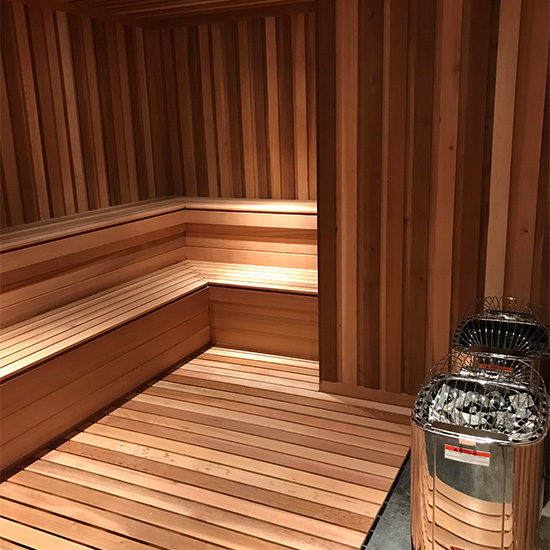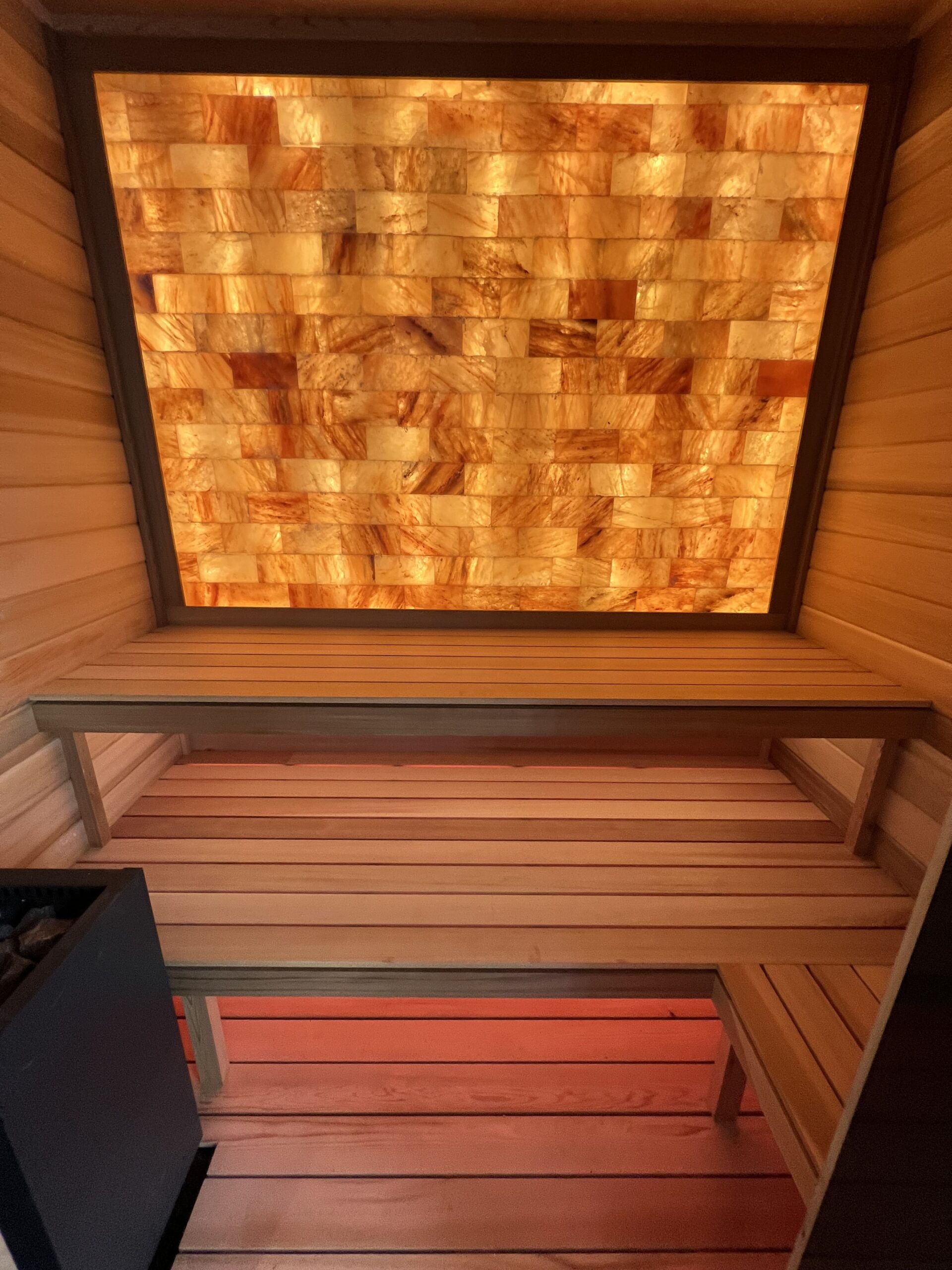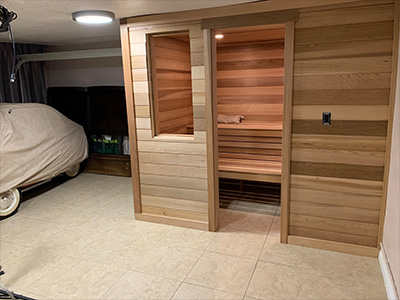When it comes to building the perfect sauna, the materials you choose play a pivotal role in determining its longevity, functionality, and overall experience. For Florida homeowners, where humidity and temperature fluctuations are part of daily life, selecting the right materials is even more crucial. In this guide, we’ll explore the best materials for saunas, their unique benefits, and why making informed decisions is essential for creating a durable and enjoyable sanctuary in your home.
Why Sauna Materials Matter
Sauna materials are not just about aesthetics—they influence the efficiency, comfort, and safety of your sauna. The right materials ensure proper heat retention, prevent warping and deterioration, and create an inviting atmosphere. Whether you’re building a custom sauna or considering a pre-fabricated option, understanding the role of each material is key to achieving a high-quality result.
Wood: The Heart of Every Sauna
Wood is the cornerstone of any sauna, and the type of wood you choose impacts its heat insulation, resistance to moisture, and overall ambiance. Saunas are traditionally constructed from softwoods, which are excellent for their ability to withstand high temperatures and humidity. Here are some top wood choices for saunas:
- Cedar: A favorite among sauna builders, cedar is renowned for its durability and natural resistance to rot and decay. Its aromatic scent adds a soothing element to the sauna experience, while its ability to remain cool to the touch makes it comfortable even at high temperatures.
- Hemlock: This wood offers a smooth, even texture and is less aromatic than cedar, making it ideal for those sensitive to strong scents. Hemlock’s affordability and resistance to warping under heat make it a practical choice.
- Spruce: Commonly used in traditional Finnish saunas, spruce provides a light, clean appearance. While slightly less durable than cedar, its affordability and natural charm make it a popular option.
- Aspen and Alder: These hypoallergenic woods are perfect for individuals with sensitivities. They have a soft, elegant finish and remain cool to the touch, enhancing comfort.
The choice of wood for your sauna walls, ceiling, and benches should reflect your personal preferences and the specific needs of your Florida home. High humidity levels in the state make it essential to opt for woods with natural resistance to moisture and decay.
Insulation: Keeping the Heat In
Proper insulation is a critical component of a sauna’s construction. Without effective insulation, your sauna will struggle to maintain consistent temperatures, leading to higher energy costs and diminished enjoyment. In Florida, where external heat and humidity can interfere with indoor environments, high-quality insulation is non-negotiable.
Materials like fiberglass and mineral wool are commonly used for insulation. Both offer excellent thermal resistance, helping to keep heat inside the sauna while preventing external moisture from seeping in. Ensuring a vapor barrier is installed correctly is also vital to protect the insulation and wooden components from damage caused by Florida’s high humidity levels.
Flooring: A Foundation for Comfort and Durability
The sauna floor must be both functional and resistant to moisture. Common flooring materials include:
- Concrete: Durable and easy to maintain, concrete floors are a practical choice for saunas. Adding tiles or a wooden overlay can enhance comfort and aesthetics.
- Tile: Tiles offer a clean, polished look and are easy to clean. Choosing slip-resistant tiles ensures safety in the humid sauna environment.
- Wooden Grates: These are often placed over the main flooring material to provide a warm, comfortable surface for bare feet. Cedar and teak are popular choices for their water-resistant properties.
Heating Elements: The Core of the Sauna Experience
The heating element is the heart of any sauna, transforming it into a space of relaxation and rejuvenation. The type of heating system you choose will dictate the materials required for installation and the overall sauna design.
- Traditional Wood-Burning Stoves: These provide an authentic sauna experience, using firewood as the heat source. While less common in Florida, they’re ideal for outdoor saunas.
- Electric Heaters: Popular for their convenience and efficiency, electric heaters are easy to control and maintain. They work seamlessly with most sauna designs.
- Infrared Panels: Infrared saunas use panels to emit radiant heat, directly warming the body rather than the air. These saunas require specialized materials that can handle the targeted heat distribution while maintaining safety.
Choosing the right heating element depends on your sauna’s purpose, location, and your personal preferences.
Glass Features: Adding Modern Elegance
Incorporating glass into your sauna design adds a touch of modern sophistication while enhancing the sense of space. Tempered glass doors and windows are commonly used in sauna construction, offering durability and safety. In Florida, where natural light is abundant, glass elements can make your sauna feel open and connected to the surrounding environment. However, it’s important to choose double-glazed, insulated glass to prevent heat loss and ensure energy efficiency.
Ventilation: Ensuring Fresh Air Flow
Proper ventilation is a cornerstone of a healthy and comfortable sauna. It prevents the buildup of stale air and ensures consistent oxygen levels, enhancing your overall experience. Ventilation systems often include intake vents near the heater and exhaust vents on the opposite wall. For Florida saunas, where humidity can already be high, a well-designed ventilation system is crucial to maintaining a fresh and inviting atmosphere.
Moisture Management: Combatting Florida’s Climate
Florida’s unique climate poses additional challenges when building a sauna. Moisture management becomes a priority to prevent mold, mildew, and damage to the wooden components. Using water-resistant materials, sealing all joints and seams, and applying protective finishes to the wood are essential steps. Additionally, installing a drain in the sauna floor helps manage excess water effectively.
Finishing Touches: Personalizing Your Sauna
The materials you choose for benches, backrests, and lighting can elevate your sauna’s comfort and aesthetic appeal. Softwoods like cedar and hemlock remain popular for their durability and comfort. Ergonomically designed benches and backrests add a layer of luxury, while LED lighting can create a soothing ambiance. In Florida, incorporating salt panels or aromatherapy elements can enhance the relaxation experience by promoting respiratory health and adding a spa-like feel.
Partnering with Experts
Building a sauna requires expertise, especially when navigating Florida’s climate challenges. Partnering with experienced professionals ensures your sauna is constructed with high-quality materials that stand the test of time. At GC Sauna Shop, we specialize in custom saunas tailored to your unique needs, offering guidance on the best materials and designs for your home.
Conclusion
Choosing the right materials for your sauna is an investment in quality, comfort, and longevity. From the type of wood to the flooring, heating elements, and finishing touches, every decision impacts your sauna’s performance and your overall satisfaction. For Florida homeowners, understanding the nuances of material selection ensures that your sauna remains a haven of relaxation and wellness for years to come. Ready to start your sauna journey? Contact GC Sauna Shop today to explore your options and create the perfect retreat for your home.



